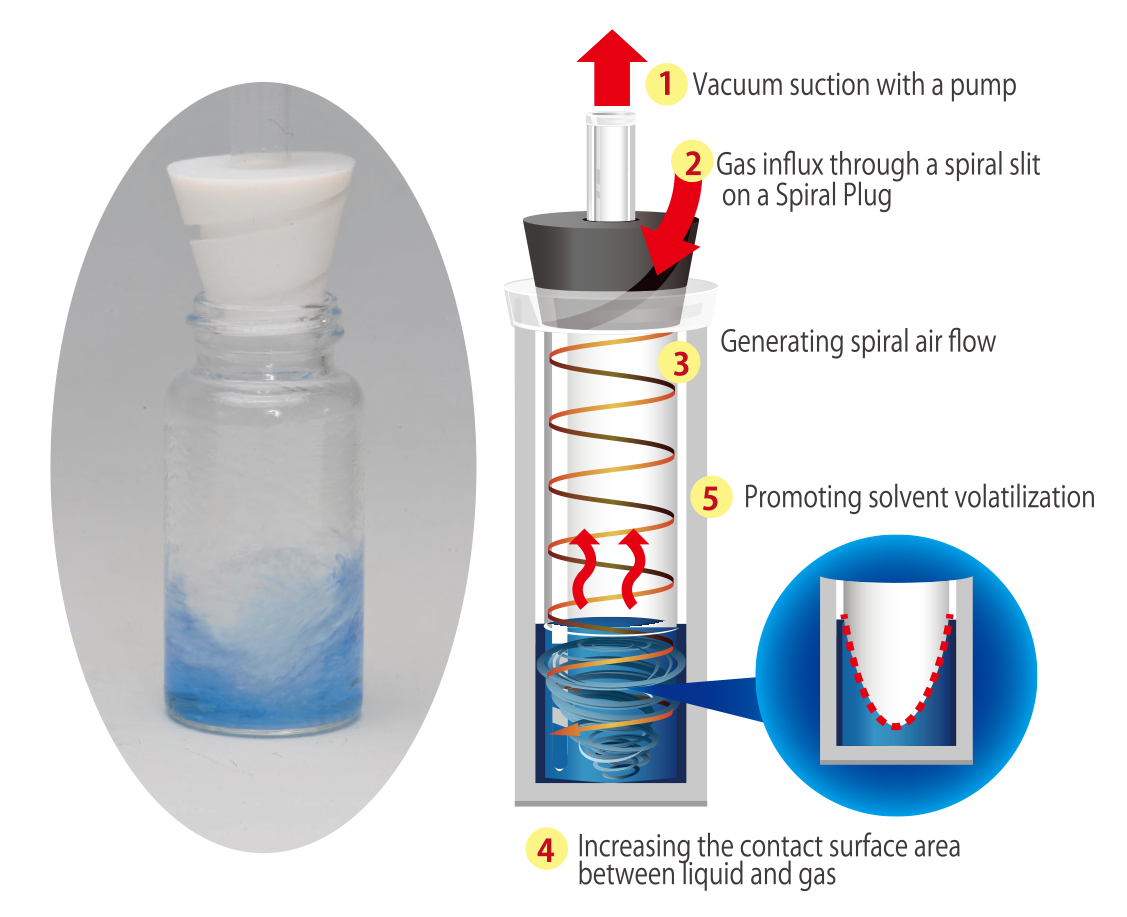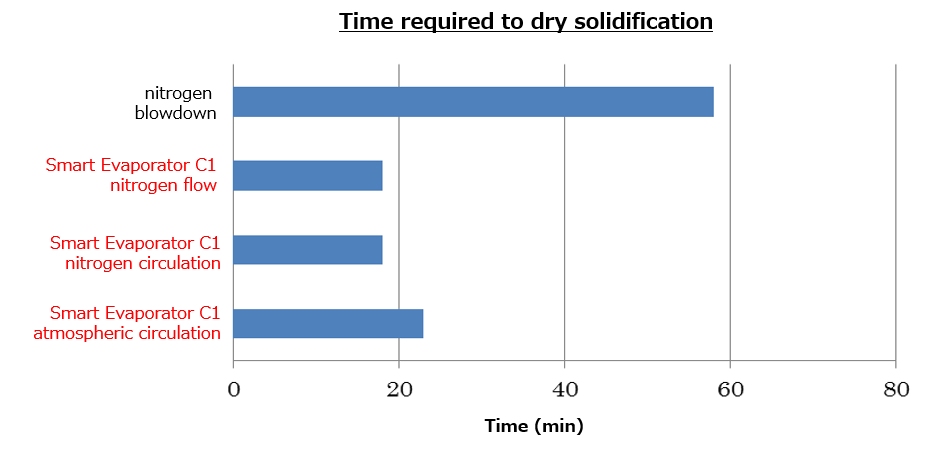Do you know?
The advantages of Smart Evaporator technology
for concentrating or removing water to dry aqueous samples
One of the reasons for researchers choosing the Smart Evaporator is its ability to remove high-boiling point solvents such as DMSO, DMF, or water. At the heart of each BioChromato Smart Evaporator is a highly efficient spiral airflow created by a special concentrator plug or “Spiral Plug”.
This novel Spiral Plug technology generates a helical flow of air or inert gas agitating the surfaceof the solvent, increasing its surface area and thereby greatly improving the effectiveness and speed of evaporation. Beneficially since the evaporation vessel on a Smart Evaporator isn’t under high vacuum, there is no risk of bumping or splashing.
Using Vacuum Vortex Concentration (VVC) methodology, Smart Evaporators increase efficiency by eliminating the time-consuming task of cleaning apparatus, potential loss of precious samples and the need to repeat the drying down process that can result from solvent bumping or splashing.

Vacuum Vortex Concentration (VVC) methodology
Feedback from Smart Evaporator users
routinely concentrating or fully drying aqueous samples.

Dr. Takashi Watanabe, Professor, Department of Medicinal Botany,
Kumamoto University Graduate School of Pharmaceutical Sciences
- We really appreciate being able to remove water directly from aqueous samples rather than having to azeotrope with organic solvents and risk solvent bumping at atmospheric pressure when we evaporate the solvent.
- Drying 15 mL of aqueous plant extract, in a 20 ml screw top vial, took less than an hour (by adjusting the temperature setting) to concentrate and then dry completely.
- It was necessary to keep a close eye on the rotary evaporator to prevent bumping. By comparison, using our Smart Evaporator, the water can be directly evaporated without azeotroping with organic solvents. Since now there is no risk of bumping at normal pressure, we can leave the evaporation of our microbial liquid culture media samples
unattended.
- Not only did we save the time I used to spend, but we were able to do other work in the meantime since we didn't have to worry about solvent bumping.

Dr. T, Senior Researcher at a National Research Organization
Technical Report comparing the use of different evaporation technologies for drying aqueous samples.

In this report we compare concentration of an aqueous papain solution on a Smart Evaporator and a nitrogen blowdown evaporator before redissolving the dried sample and measured its enzyme activity.
The results showed that the enzyme activity of the sample concentrated by Smart Evaporator C1 was the same or higher than samples concentrated by the nitrogen blowdown (which can sometimes thermally degrade sensitive samples). It was also found that the concentration speed with Smart Evaporator C1 was about three times faster than that of the nitrogen blowdown evaporator.
To download and read this technical report in full please visit here.
